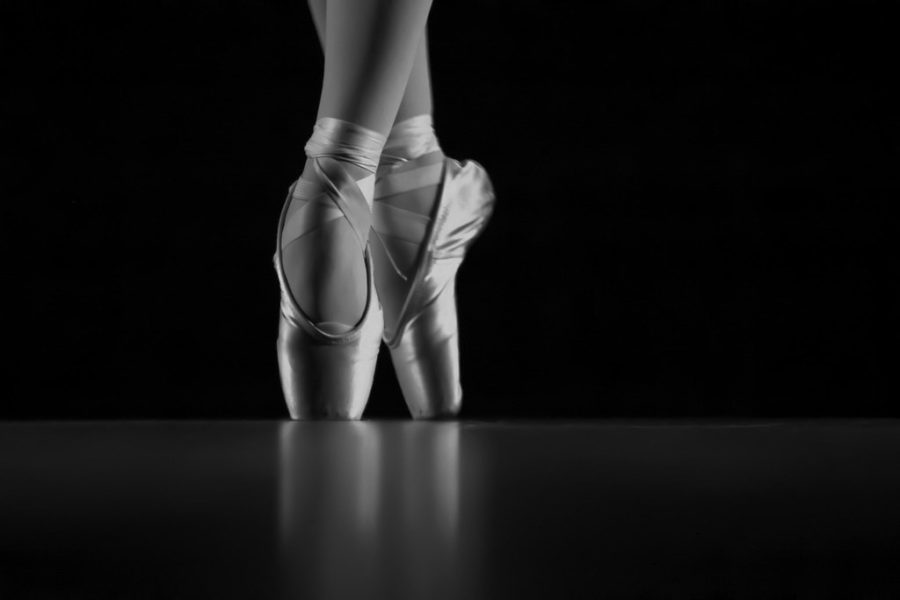Racism in Ballet
“Ballet Shoes” by Kryziz Bonny is licensed under
Ballet is all about control. Control on your feet, your turnout, your facial expression, your resilience — an endless list. The discipline and patience required is astronomical, and was universally believed as a “white” quality before the turn of the 21st century.
February 6, 2022
Ballet, simply said, is a racist sport. While this stems from various reasons, it mostly comes from underlying white supremacy. It’s a white dominated field, and the discipline, the attire, even the fetishization all contribute to the looming, hidden issue of the problematic values stemming from the white idealistic version of ballet.
As an opulent, exclusive, and principally white industry, this art form originated during the Italian Renaissance during the 15th century. First as court entertainment for aristocrats, royals and nobles alike, the industry was composed of mostly countries instead of professional dancers. Surprisingly, royals sometimes took part in the activity. Louis XIV’s dancing was even considered a prime example of dancing for nobles. It then developed into a complement for opera performances, called opéra-ballets. Over the next several centuries, France and Russia began to form their own spins off the traditional Italian sport.
Ballet is all about control. Control on your feet, your turnout, your facial expression, your resilience — an endless list. The discipline and patience required is astronomical, and was universally believed as a “white” quality before the turn of the 21st century. Even now, prejudice still lingers subconsciously. This “white” quality implies that people of color are uncivilized and unruly, unfit for the strictness of ballet. The exemplary ballerina is white, and this “standard” ballerina body is viewed as simply impossible for someone of color.
Recently, a select few dancers of color have broken these rules, proving to the world the momentous potential of dancers of color. As the first African American woman promoted to the principal dancer role at the American Ballet Theater (ABT), Misty Copeland has broken multiple barriers, opening new opportunities and paths to others struggling through a system meant to tear them down.
Arthur Mitchel is another example of this, as the first African American ballet dancer at the New York City Ballet and the co-founder of the Dance Theatre of Harlem, the first of its kind to prioritize Black dancers. While there are many more accomplished skillful Black dancers, the list is considerably small and still considered an anomaly.
Secondly, examining exterior and less noticeable, but still blatantly racist factors of ballet: the attire. Until recently, most tights and shoes were made in skin tones fit for white ballet dancers, Black dancers needed to personally pay for foundation to cake onto their shoes and tights in order for the color to reflect their “true colors,” in a process called pancaking.
Ballet shoes were first designed in order to create a seamless look, one uninterrupted line connecting their costume, their tights, to their feet. POC, people of color, dancers are now forced to make a decision of either spending up to thousands of dollars pancaking their shoes or simply accepting imperfect shoes.
This isn’t just a fiscal issue directed to dancers of color, it’s so much more.
Quoted from Virginia Johnson, the artistic director of the Dance Theater of Harlem: “This isn’t about shoes, this is about who belongs in ballet and who doesn’t. It’s a signal that the world is open to you.” It’s apparent that this is a larger issue than at first glance.
Ballet also puts large emphasis and value on uniformation. This is especially difficult when differences can be seen before dancing, a look of asymmetry that can’t possibly be fixed, and can only be welcomed and supported.
Royal Ballet Eric Underwood said in agreement, “In a corps de ballet, especially for women, the idea is to be identical. For someone who isn’t white, that’s difficult. You’re left with a choice: you have to either become so great a dancer that you’re not left in a chorus or a line, or embrace your beauty and hope others do, too – seeing it as beautiful, even if the symmetry is disturbed.”
The racism doesn’t end at just prejudice against people of color, it goes further out to a point of fetishization. Many renowned ballet performances have exaggerated stereotypes in their roles.
Most notably is The Nutcracker, with outwardly racist versions of Chinese “Tea” and Arabian “Coffee,¨ obvious forms of caricature. Elements like overemphasized head bobbing, excessive finger protruding, and insulting eye slanting makeup, and countless other costume, makeup, and dance components that are outrageously offensive.
Other distinguished and prominent companies allow and even promote uses of blackface. For example, from the Bolshoi Ballet in Moscow, they’ve recently performed “La Bayadère,¨ set in Royal India where dancers participated in blackface. Black ballet dancers, like Chloé Lopez Gomes of the Staatsballett Berlin, have felt pressured to wear “white” makeup to appear paler in order to fit in. This outrageous and inappropriate suggestion would not be considered an aberration by many dancers of color suffering in silence, frightened resistance would ruin their already fragile career.
Changes must be made.
Ballet is an intricate art form that should be diverse and inclusive by everyone, no matter the race; passion should be the only indicating factor.
https://www.marieclaire.com/culture/a36187044/turning-pointe-book-ballet-racism/
https://www.thecrimson.com/article/2020/6/22/an-open-letter-to-the-ballet-community/
https://www.britannica.com/art/ballet
https://www.theguardian.com/stage/2012/sep/04/black-ballet-dancers
https://www.vox.com/2015/12/24/10653956/stella-abrera-ballet







